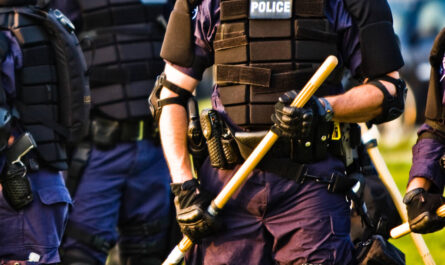Airsoft Guns: The Growing Popularity of Non-Lethal Sports and Training Tools
The sport of airsoft is growing rapidly across the world as an exciting recreational activity and practical training tool. Airsoft guns, which fire non-metallic projectiles, provide realistic gun handling and combat simulation without the dangers of real firearms. Let’s take a closer look at this emerging segment.
History and Development
The origins of airsoft can be traced back to the 1970s in Japan where it was initially called “air gun war games”. Players would modify toy guns to fire plastic pellets for realistic recreational skirmishes. In the 1980s, it gained popularity in Europe and North America. Over time, dedicated airsoft gun manufacturers emerged who designed specialized replicas with improved firing mechanisms and realistic features tailored for the sport. Today, airsoft has evolved into a technical sport played globally by millions with extensive fields, teams, and organized events.
Types of Airsoft Guns
There is a wide variety available catering to different playstyles and budgets:
Pistols: Compact single-handed Airsoft guns ideal for CQB engagements. Brands like Tokyo Marui and KJW make highly realistic replica pistols.
SMGs: Lightweight and versatile like the MP5, UMP, or PP-19 Bizon. Good for close quarters or as a secondary weapon. CYMA and G&G produce some of the best full-metal SMG models.
assault rifles: The workhorses of any arsenal. M4, AK, G36 type rifles are very popular. High-end AEG rifles from brands such as ICS, VFC and TM offer top performance and realism.
Sniper Rifles: Bolt-action or semi-auto guns tuned for long range accuracy. Well-made snipers from WA System and Silverback provide satisfying precision play at distances over 100 feet.
Accessories for Realism and Performance
Serious airsofters personalize their replicas with realistic accessories for maximum immersion and functionality. Some common additions include:
– Tactical gear like vests, pouches, and plate carriers to carry ammunition and complete loadouts.
– Optics – EOTech, Aimpoint and scopes improve target engagement at longer distances.
– Flashlights, foregrips, and laser units for low-light situations.
– Custom inner barrels and hop-up upgrades to boost range and accuracy over stock internals.
– Real steel parts like triggers, stocks or rails for authenticity.
Fields and Game Modes
Airsoft is primarily played on both indoor and outdoor fields with varied terrains and structures. Common game modes include:
Deathmatch: Teams battle to eliminate opponents from designated spawns until one side wins.
Capture the Flag: Steal the enemy flag while defending your own to score points. Requires strategy and teamwork.
Scenarios: Multi-phase mission style games depicting combat situations requiring objectives to be completed. Great for milsim groups.
ZB Buildings: Fast-paced combat in confined indoor arenas testing close quarters skills. Fun for pick-up games.
Airsoft’s Rising Applications
Beyond being an engaging combat sport, airsoft is finding diverse professional uses as well:
Law Enforcement Training: Realistic simulation allows practicing room clearing, hostages situations with lower risks than using service weapons.
Military Simulation: Recreating hazardous scenarios like urban warfare in safe, cost-effective ways. Easier to transport than bulky simunition equipment.
Self Defense: Non-lethal airsoft effectively trains awareness, target identification, and draw shooting skills useful for civilian protection.
Airsoft’s popularity isn’t slowing with its unique blend of marksmanship, teamwork, outdoor adventures and military reenacting experiences in non-lethal ways. As technology and fields continue improving, it remains an immersive sport and serious training medium growing its fanbase worldwide.
Note:
1. Source: Coherent Market Insights, Public sources, Desk research
2. We have leveraged AI tools to mine information and compile it




